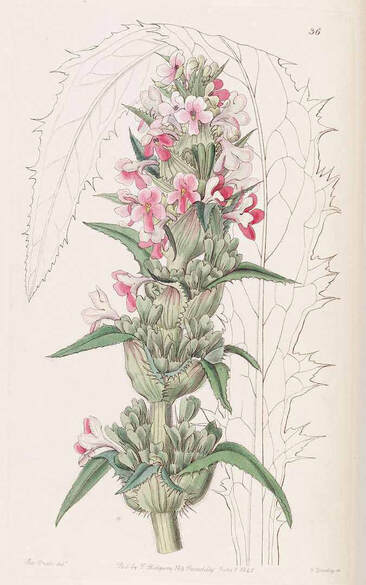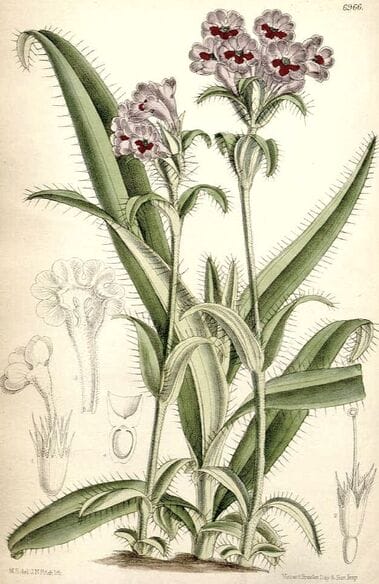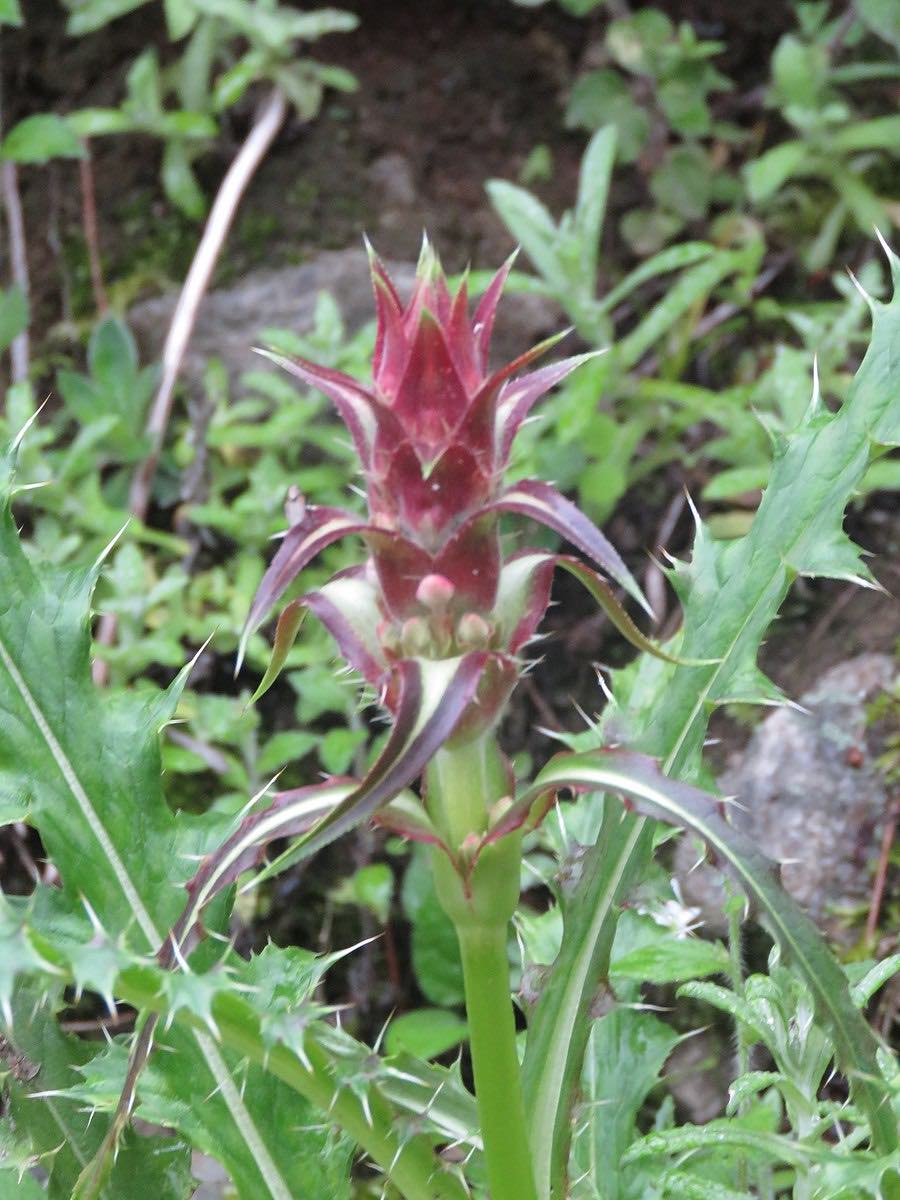Morina, Spyang tsher སྤྱང་ཚེར་
Spyang tsher (Tibet)Ci Xu Duan (TCM)
Bishkandara (Ayurveda)
 Morina longifolia
Morina longifoliaLindley, J., Edwards’s Botanical Register (1840) |
 Morina nepalensis
Morina nepalensisCurtis, W., Botanical Magazine (1887) |
 Morina longifolia
Morina longifolia(Photo by Vinayaraj) (Wikimedia)
Botanical name:
Morina spp.
Several types are differentiated:
- Spyang tsher: Morina nepalensis (syn. M. betanicoides)
- Spyang tsher dkar po (White): Morina longifolia, M. kokonorica, M. polyphylla
- Spyang tsher nag po (Black): Carduus acanthoides, Cirsium verutum, Cirsium souliei, C. polonicum, C. eriophorum
Parts used:
Root
Temperature & Taste:
Neutral. Sweet
Classification:
Uses:
1. Clears Heat, Resists Poison:
-Toxic Sores and Swellings
-Diarrhea, Dysentery (Nepal)
-drains pus in suppurative wounds
-Swellings, Tumors, Cancer (Tibet, Norbu)
2. Benefits Stomach, Clears Damp:
-Stomachache, Indigestion
-Phlegm and Damp diseases from poor digestion
-full doses as an emetic in Phlegm disorders (Tibet)
3. Stops Wind, Settles Spasms:
-Dizziness, Headache
-deviation of the mouth and eyes
4. Tonifies the Kidneys, Clears Wind-Damp:
-swollen painful joints; Arthritis and Rheumatism
-Lumbago
-muscle and joint pain, numbness of the limbs (Nepal)
-Edema, Urinary incontinence
-Excess Bleeding after Childbirth (Nepal)
5. Externally:
-topically to Sores, Boils
-Swellings, Tumors
-applied to purulent Wounds
Dose:
Powder: 1–3 grams
Decoction: 3–6 grams
Comment:
The herb of the related Morina chinensis is used in TCM. It is primarily used for Wind-Damp painful obstruction and swollen painful sores and swellings. It is probably synonymous in effect.
Main Combinations:
1. Painful swollen joints, combine Morina with Stellera chamaejasme, Aconitum spicatum, Terminalia bellirica and apply to the joints.
Major Formulas:
Cautions:
None noted
